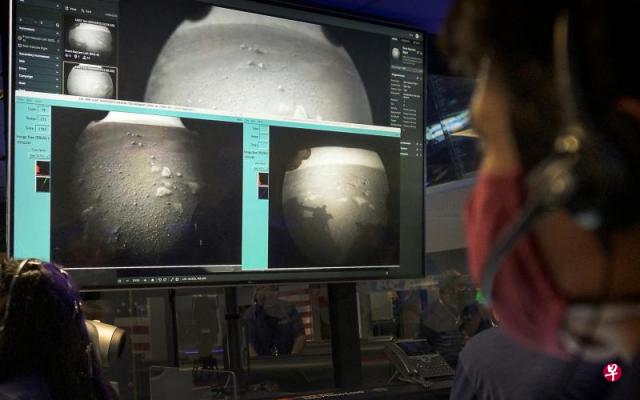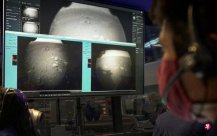
(Los Angeles Composite Electric) The largest and most advanced Mars detector perseverance in the United States landed on Mars yesterday, and then returned to the photo of Mars on the surface of Mars to take the first step to explore whether the mission of life on Mars.Essence
Perseverance launched by NASA (NASA) is after the 203 -day itinerary, crossing 293 million miles (about 472 million kilometers), completed the Mars atmosphere, decline and landing in seven minutes in seven minutes.the process of.Perseverance landed at Jezero Craater at 3:55 pm on the 18th of Eastern Time (at 4:55 am on the 19th of Singapore time) north of Mars equator.
It is similar to the perseverance of a SUV car shortly after landing, and it returns a black and white image on the surface of Mars. Among them, you can see the shadow of the detector on this desolate and rugged rock.When the radio signal confirmed the perseverance landing, the task team in the laboratory in the laboratory of NASA sounded warm applause and drinking.
The login process of perseverance is the largest part of this two -year, investment of US $ 2.7 billion (S $ 3.586 billion).The main task of perseverance is to find the traces of the fossils of paleo -life life that might survive on Mars.
The first collection of Mars sample detectors Bring back to the earth within 10 years
Yezeluo meteorite is about 28 miles wide (about 45 kilometers). Scientists have determined 3.5 billion years ago. This meteorite pond had a lake.In the next few weeks, the perseverance will be tested, and then the two -year detection task will be launched on the Yerazro meteor pond.
NASA Deputy Director Zibchen said in the live broadcast: "This is the beginning of the epoch -making." He said that the task team made the most fully preparations for landing on the Jezuro meteorite pit. This area is also history.The detector has been the most difficult area in Mars.
According to NASA, the perseverance will also be the first detector to sample from Mars to the earth. It will bring back the rocks and soil samples collected from Mars and bring back to the earth through other Mars detection tasks in the next 10 years.
The belly of perseverance is also tied to a Mars helicopter called "Ingenuit", but it looks more like a micro -drone.It is also the first helicopter that landed on the "Red Planet". The task is to conduct various flight tests.
Perseverance is the sixth detector of NASA's sixth NASA since 1997.Among them, the "Curiosity" landed in Mars in 2012 was about 3700 kilometers away from the perseverance, and still worked at the Gale Craater on the Mars equator.


